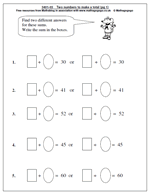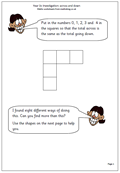
In year 3 children are expected to be able to solve problems involving numbers, follow a line of enquiry, identify patterns and organise information. Investigations are a great way to do this as well as developing logical thinking.
This is a fun investigation for children from Year 3 upwards (7+ yrs) which encourages children to organise their thoughts as there are enough different answers to make it interesting. It is also excellent for adding several small numbers.
The task is simple:
Put in the numbers 0, 1, 2, 3 and 4 in the squares on the grid so that the total across is the same as the total going down.
Children will probably start this mini investigation with a lot of ‘trial and improvement’ and then come up with some correct solutions.
To make it easier there is also a print-out of large numbers which can be cut out to help children move the numbers about without having to write down everything they do. I would recommend this approach for any similar activity, such as magic squares.
After a while some key aspects to the logical thinking behind this may arise, including:
1. Add up the total of 0, 1, 2, 3 and 4. It comes to 10.
2. This means that if the total across and the total down are equal and the corner number is zero, they must both add up to 5.
3. By working methodically with zero in the corner 8 arrangements can be found.
Investigation: across and down
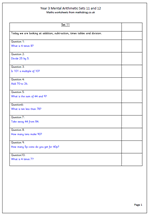 Two more sets of mental arithmetic questions to add to our growing collection. Today’s questions concentrate on addition, subtraction, multiplication and division.
Two more sets of mental arithmetic questions to add to our growing collection. Today’s questions concentrate on addition, subtraction, multiplication and division.
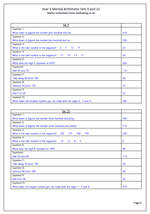
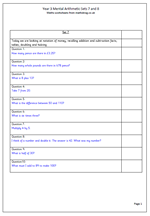
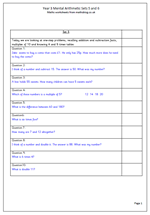
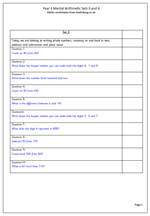
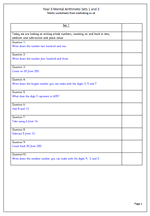

 When working out how many more to make a number up to 100 it is important not to mix up two different ways of doing it. Let’s take the question:
When working out how many more to make a number up to 100 it is important not to mix up two different ways of doing it. Let’s take the question: